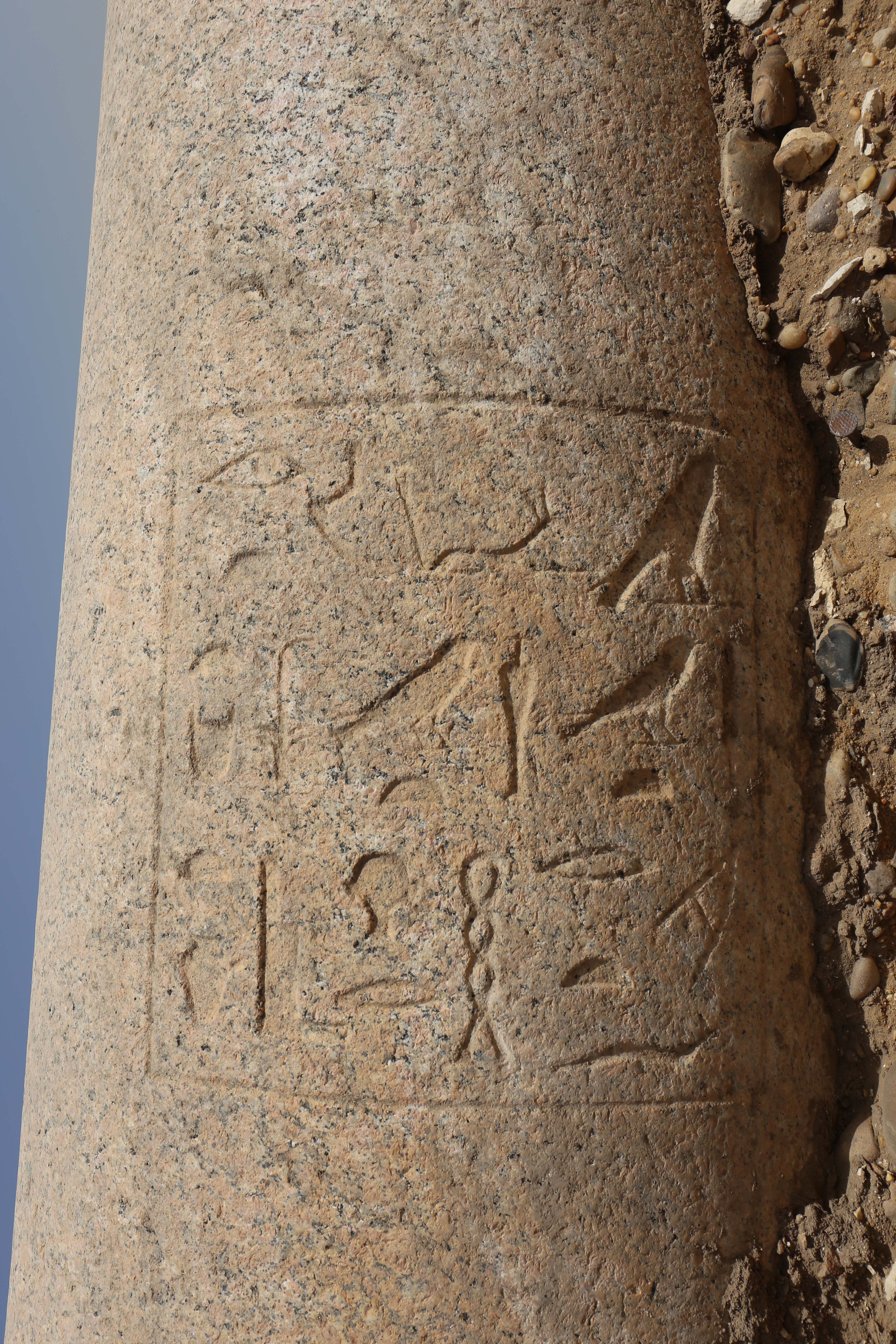An archaeological mission led by the Czech Institute of Egyptology in Saqquara has unearthed a richly painted tomb belonging to a nobleman from the 5th Dynasty and an inscription revealing the name of an important queen from the same period.

The mission was working on consolidating and strengthening the underground chambers beneath the pyramid complex of Djedkare (late 25th century to mid-24th century B.C.), the 8th pharaoh of the 5th Dynasty of Egypt’s Old Kingdom. The spaces were in dangerously precarious condition from having been looted of their contents and architectural materials in antiquity and never restored. The remains of the entire pyramid structure were endangered by the structurally unsound foundations.

While studying and documenting the area of southern Saqqara around the pyramid, the team discovered the tomb of late 5th Dynasty pharaonic courtier Khuwy. The above-ground entrance to the tomb is an L-shaped offering chamber. Its walls were once decorated with reliefs but only the bottom edge of them has survived, the rest having been stolen by stone thieves harvesting the high quality white limestone blocks.

On the north wall of the chamber is an entrance to an underground space that was likely inspired by the substructures of 5th Dynasty pyramids. A descending corridor leads to an underground vestibule. Its southern wall has a shorter corridor that leads into a hall with highly decorated painted in walls. The scenes on the north and south walls depict Khuwy sitting at a sacrificial table. The east wall depicts rows of sacrifices, including a cow in the act of being butchered. The west wall is decorated as a palace facade.

An entrance in the south wall leads to a small room used as a warehouse. Archaeologists found a few small funerary artifacts in the backfill. Two entrances in the west wall lead to the interior burial chamber. It is a small, undecorated space. It originally held a limestone sarcophagus that filled basically all of the room. Unfortunately the sarcophagus was destroyed by looters in antiquity. Archaeologists did find a few body parts in the rubble that showed clear signs of having been mummified.

Adjacent to Djedkare’s pyramid complex is another pyramid complex dedicated to his queen consort. One of the first pyramid complexes built in southern Saqqara, it is a unique structure that attests to the high esteem she was in by her husband. It is the largest Queen’s pyramid complex constructed in the Old Kingdom and has architectural features, like a massive red granite pillar with a palm capital, only seen in mortuary temples of kings. Archaeologists believe she played an essential role in securing her husband’s throne.
Despite her great significance, her name was lost and scholars have debated for centuries whose funerary complex this was. The mission has now answered the question.

The name and titles of the owner of this unique monument was found on the column made of red granite in the newly uncovered portico of the queen’s complex. The inscription was carved in sunken relief in a rectangle on the shaft of the column, and it reads: “The one who sees Horus and Seth, the great one of the hetes sceptre, the great of praise, king’s wife, his beloved Setibhor.”

The archaeological investigations and restoration of the pyramid complexes of Djedkare and Setibhor will continue. The mission hopes to find more information, perhaps even more tombs, from the important period of transition between the late 5th and early-6th Dynasties. This was a time of great shifts in religious and political ideology. Djedkare was the first king of the 5th Dynasty who did not build a solar temple, for example, and the first pyramid texts were inscribed on the walls of the inner chambers in the tomb of his successor Unas.





